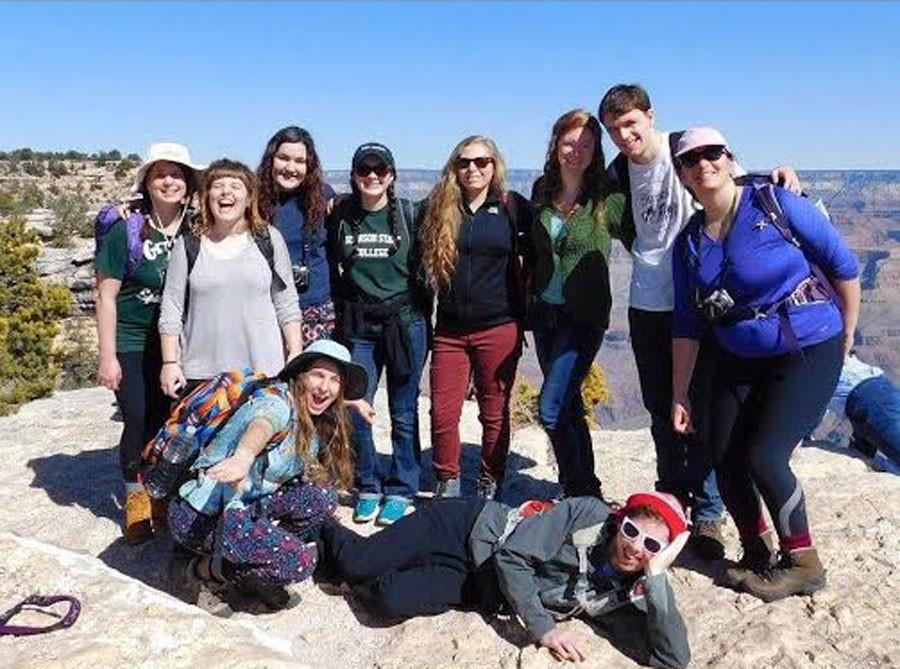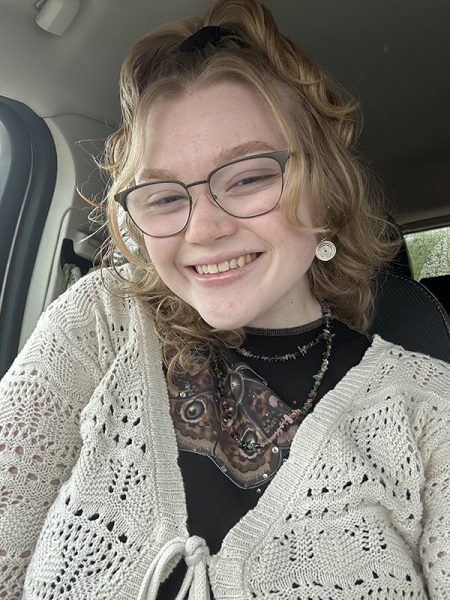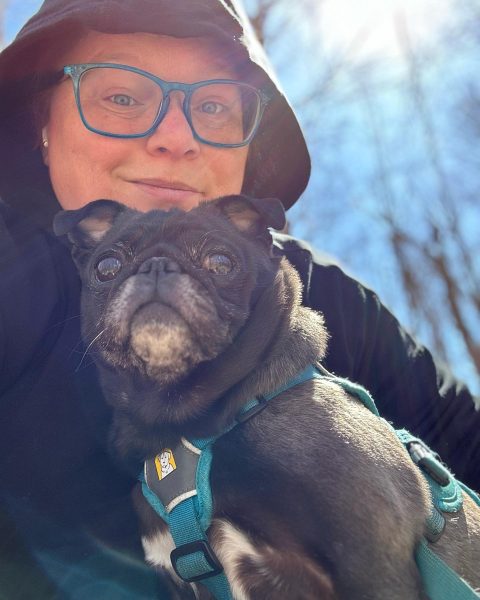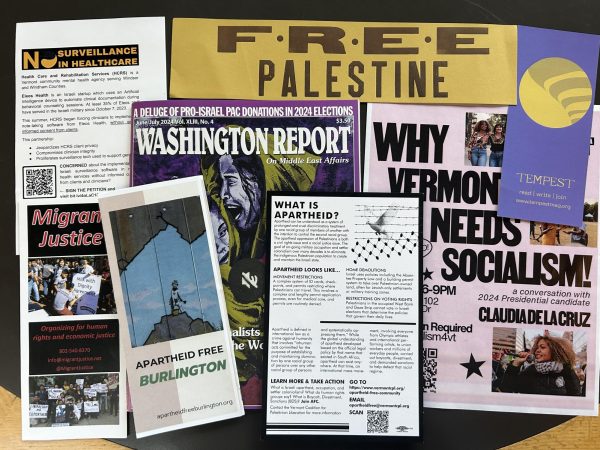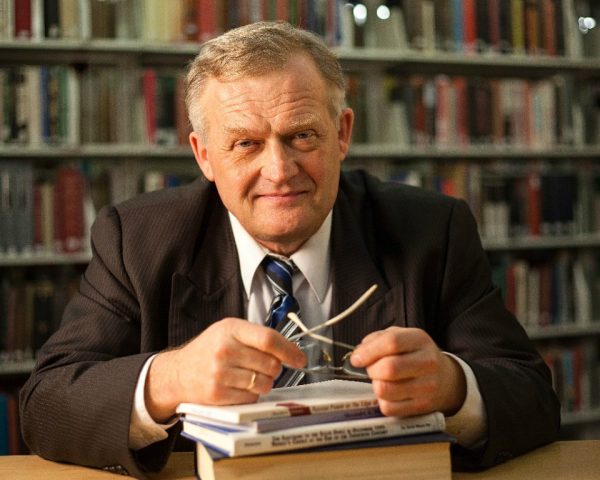Badger Alternative Breaks sends 12 students to the Grand Canyon
L to R: Shavonna Bent, Hunter Mallette, Bridget Giles, Abbie Casey, Mikayla Turner, Heather White, Erik Crosby, Carol Hassan, Becca Farrow, Zach Levy
What are 12 students doing at two a.m.? Certainly you wouldn’t expect them to be embarking on a one week service trip across the U.S. But, on Feb. 20, students got in Johnson State College vans and left for Grand Canyon, Arizona to do trail maintenance in one of America’s most famous national parks.
Participants for the Badger Alternative Break Grand Canyon trip included Becca Farrow, Heather White, Erik Crosby, Zachary Levvy, Shavonna Bent, Abbie Casey, Renee Bonneau, Rachele Funk, Caroline Hassan, Bridget Giles, Mikayla Turner, and me.
It was Renee Bonneau’s first year as a trip leader. “I didn’t realize how passionate I was about working with the National Park Service until we started planning the educational aspects of our meetings in September,” she said. “I think the toughest aspect of being a BAB leader is that I wanted everyone to be as passionate about the trip as I was.”
Sophomore and second year BAB participant Erik Crosby was particularly excited about picking up litter. “I chose this BAB trip because I wanted to expand my horizons in the awareness of other environmental issues, but still work with people,” said Crosby.
After going to weekly meetings in the fall and spring, we were ready to head to Boston and board our plane. With two connecting flights and layovers, it would be a long day of travel with a projected arrival time at the park of 11 p.m.
Our first stop in Arizona was to buy groceries for the week. Vans we had rented to escort us from the Phoenix airport to the Grand Canyon (a three and a half hour commute) promptly drove us from the grocery store in Phoenix, and we were off on a week-long adventure.
The National Park Service allowed us to stay in a two-story apartment, fully furnished with two bathrooms and with basic cooking utilities. There were 12 air-mattresses, and Centennial Volunteer Ambassador Sarah Lechich welcomed us and helped us move in our groceries.
Our first day on site was a free day, thank God, as we were all barely functioning from lack of sleep. After sleeping in, we packed day bags and decided to go for a hike. There are many trails at the Grand Canyon, and the Rim trail stretches for 13 miles, from the South Kaibab Trailhead west to Hermits Rest. Being so exhausted, we only hiked approximately three miles and took breaks for photos.
After an eventful morning, the group decided to explore the Hopi House, a replica of a Native American hut where the top floor is an art gallery and the bottom level is a gift shop where you can find Native American sand art, hand-made jewelry, lamps, pottery, and much more.
Day two came early at seven a.m, where Lechich greeted us at the door and we were bussed to our service destination. Picking up trash from the Orange bus route took the group until four p.m. Common litter finds were cigarette butts, dirty diapers, and fast food wrappers.
“A low-light for me during the trip was seeing an atrocious amount of trash in any given area you looked. It was really shocking,” said Crosby.
Two participants were assigned to cooking dinner each night, while the rest were given time to unwind and bond. “A highlight of the trip was mixing up participation and getting to bond with different members of the group who you hadn’t had much contact with,” said Crosby.
Days three, four, and five were very intensive and required lots of energy and focus. Our group cleaned up litter and swept the Blue and Red bus lines, each well over a 50-minute bus trip that covers expansive land. All major parking lots were also cleaned, which were outside of many gift shops and cafes.
As a group we had many objectives: we wanted to see the park at night, lit just by the moon, and we also wanted to see the canyon as the sun rose and set. After a long day of service, we ventured to Mather Point, located near a Visitor Center, to perch and enjoy the moon.
Wednesday, our second free day, we awoke and got ready for our second hike of the week: the South Kaibob Trail, seven miles long. The trail was extremely steep and still icy from winter as we made our slow descent. Due to some participants’ fear of heights, we only made it a quarter of the way down. Being able to actually touch the canyon walls put a smile on everyone’s face.
Next, the group ventured to the Geology museum, where Ranger Ron was giving a talk about the Canyon’s California Condor population. Afterward, we were allotted time to ask him any question we could think of.
“What made you decide to come to the Grand Canyon and work for NPS?” asked Becca Farrow.
“Sixteen years ago, my wife had wanted to become a park ranger,” Ron said. “And any husband who knows what’s good for him goes along with his wife. So we packed up our car, and we only had $200.00. It was all or nothing, and I’ve been here ever since. Now she is buried in our cemetery here at the park, and I’ll join her someday.”
The week went by so fast that we were astonished come Friday, a day devoted to cleaning the parking lots we had left over. We got out early at two p.m. The local high school was holding a carnival to celebrate the National Park’s centennial birthday. The carnival was packed with local businesses and programs hosting games for free prizes.
As a perfect ending to this Arizona visit, Lechich scheduled an International Dark Skies talk with a local Kaibob Native American speaker.
The group walked to the McKee Ampitheater, and, as small lighted cones guided us along the way, I could see clearly the beautiful Big Dipper and the North Star. The speaker went on to tell stories about how the canyon came to be, according to Kaibob legends, describing various sacred animals like the wolf that helped to establish this beautiful land.
Staring off into the stars, I hoped that I, and every other dedicated steward on the trip, could make it back to the canyon in our lifetime.


